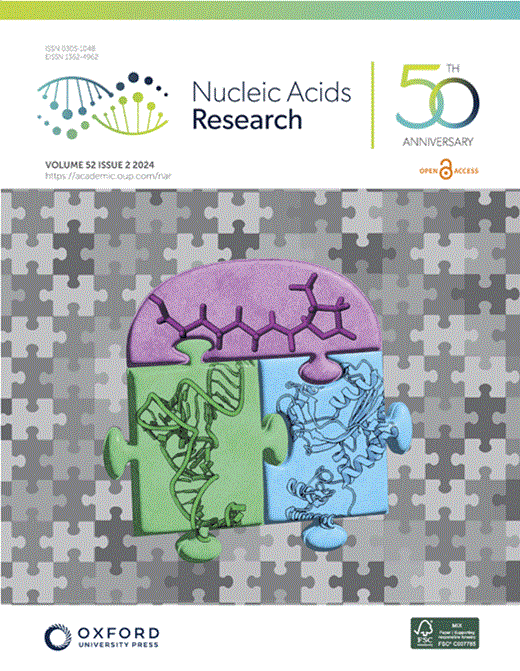Regulation of CRISPR trans-cleavage activity by an overhanging activator
IF 16.6
2区 生物学
Q1 BIOCHEMISTRY & MOLECULAR BIOLOGY
引用次数: 0
Abstract
The clustered regularly interspaced short palindromic repeats (CRISPR)/Cas12a system exhibits extraordinary capability in the field of molecular diagnosis and biosensing, attributed to its trans-cleavage ability. The precise modulation of performance has emerged as a significant challenge in advancing CRISPR technology to the next stage of development. Herein, we reported a CRISPR/Cas12a regulation strategy based on an overhanging activator. The presence of overhanging domains in activators creates steric hindrances that have a substantial impact on the trans-cleavage activity and activation timing of Cas12a. The trans-cleavage activity of Cas12a can be finely tuned by adjusting the position, length, and complementarity of the overhanging domains. Moreover, specific structures exhibit characteristics of automatic delayed activation. The presence of overhanging domains enables precise and timely activation of Cas12a, facilitating multifunctional applications. This system effectively accomplishes dynamic regulation, programmable release of cargo, logical operations, and multi-enzyme detection. The flexibility and versatility of this simple and powerful CRISPR regulatory strategy will pave the way for expanded applications of CRISPR/Cas in biotechnology, bioengineering, and biomedicine.求助全文
约1分钟内获得全文
求助全文
来源期刊

Nucleic Acids Research
生物-生化与分子生物学
CiteScore
27.10
自引率
4.70%
发文量
1057
审稿时长
2 months
期刊介绍:
Nucleic Acids Research (NAR) is a scientific journal that publishes research on various aspects of nucleic acids and proteins involved in nucleic acid metabolism and interactions. It covers areas such as chemistry and synthetic biology, computational biology, gene regulation, chromatin and epigenetics, genome integrity, repair and replication, genomics, molecular biology, nucleic acid enzymes, RNA, and structural biology. The journal also includes a Survey and Summary section for brief reviews. Additionally, each year, the first issue is dedicated to biological databases, and an issue in July focuses on web-based software resources for the biological community. Nucleic Acids Research is indexed by several services including Abstracts on Hygiene and Communicable Diseases, Animal Breeding Abstracts, Agricultural Engineering Abstracts, Agbiotech News and Information, BIOSIS Previews, CAB Abstracts, and EMBASE.
 求助内容:
求助内容: 应助结果提醒方式:
应助结果提醒方式:


